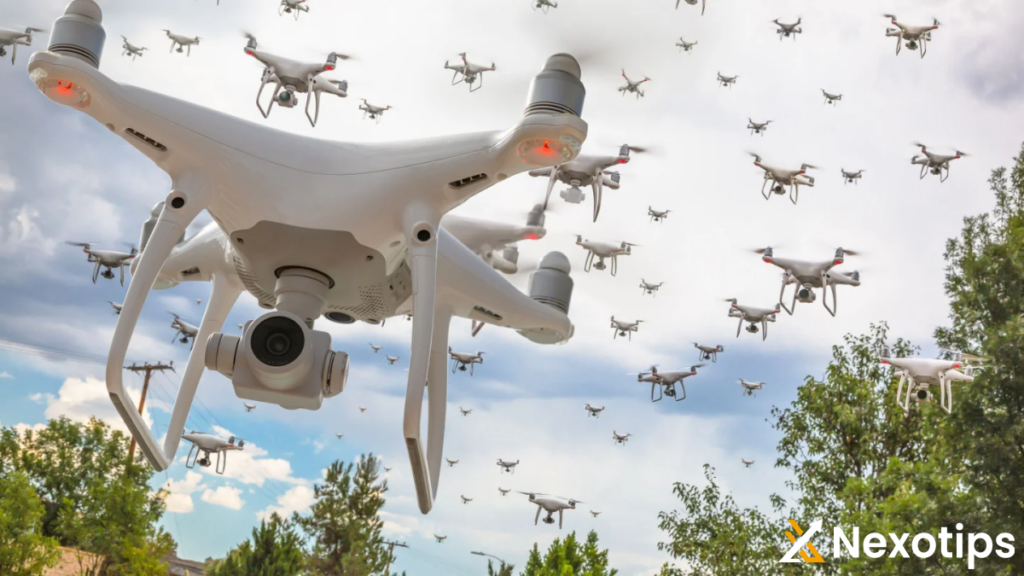
Social Technology: Exploring 6 Advanced Studies in Societal Tech Evolution
- The Impact of Social Media on Mental Health: Investigate the relationship between excessive social media use and its effects on mental health, such as increased anxiety, depression, and feelings of loneliness.
- Online Privacy and Security: Explore the challenges and concerns surrounding online privacy and security in the age of social technology. Discuss the potential risks of sharing personal information online and the measures individuals can take to protect themselves.
- Social Media and Political Movements: Analyze the role of social media platforms in facilitating and shaping political movements, such as the Arab Spring or the Black Lives Matter movement. Examine how social technology has empowered individuals to mobilize and advocate for social change.
- The Psychology of Online Communication: Investigate how social technology has influenced the way people communicate and interact online. Explore topics such as self-presentation, online identity, and the impact of anonymity on behavior.
- Social Media and Fake News: Examine the spread of misinformation and fake news through social media platforms. Discuss the implications of this phenomenon on public opinion, democracy, and the role of social technology companies in combating fake news.
- Social Technology and Relationships: Explore how social media and other forms of social technology have impacted interpersonal relationships. Discuss the pros and cons of maintaining relationships online, the phenomenon of “digital cheating,” and the challenges of maintaining genuine connections in a digital world.
- Social Technology and Education: Investigate the integration of social technology in educational settings. Discuss the benefits and drawbacks of using social media platforms for educational purposes, such as online learning, collaborative projects, and student engagement.
- Social Technology and Cyberbullying: Examine the prevalence and consequences of cyberbullying in the context of social technology. Discuss the role of social media platforms in addressing and preventing cyberbullying, as well as the psychological impact on victims.
- Social Technology and Consumer Behavior: Explore how social media platforms and online reviews influence consumer behavior. Discuss the power of social technology in shaping purchasing decisions, brand loyalty, and the rise of influencer marketing.
- Social Technology and Work-Life Balance: Investigate the impact of social technology on work-life balance. Discuss the challenges of disconnecting from work in an always-connected world and explore strategies for maintaining a healthy relationship with social technology.
These research topics provide a starting point for exploring the fascinating intersection of social technology and human behavior. By delving into these areas, you can shed light on the various implications, challenges, and opportunities that arise in this rapidly evolving field.
others: CSSP | Welcome to Jawaharlal Nehru University
Social Technology Studies: Bridging the Digital and Social Divide

Social technology encompasses a wide range of digital tools, platforms, and applications that have revolutionized the way we interact, communicate, and build relationships in today’s interconnected world. From social media platforms like Facebook, Twitter, and Instagram to messaging apps like WhatsApp and Snapchat, these technologies have become an integral part of our daily lives, transforming the way we connect with others and share information.
One of the key aspects of social technology is its ability to bridge geographical barriers and bring people from different parts of the world closer together. Through social media platforms, individuals can connect with friends, family, and even strangers, fostering a sense of community and belonging. These platforms also provide a space for individuals to express themselves, share their thoughts, and engage in discussions on various topics, ranging from politics and social issues to hobbies and interests.
Moreover, social technology has also revolutionized the way we communicate and collaborate in professional settings. Platforms like LinkedIn have become essential tools for networking, job searching, and professional development. They allow individuals to showcase their skills and experiences, connect with potential employers or clients, and stay updated with industry trends and news.
In addition to social media, social technology has also played a significant role in the healthcare industry. Telemedicine apps and platforms have made it possible for individuals to access medical advice and consultations remotely, eliminating the need for in-person visits and reducing healthcare costs. This technology has proven particularly valuable in rural or underserved areas, where access to healthcare services may be limited.
Furthermore, social technology has also had a profound impact on activism and social movements. Platforms like Twitter and Instagram have become powerful tools for raising awareness, organizing protests, and mobilizing communities around various causes. They provide a platform for marginalized voices to be heard and for individuals to come together to advocate for change.
However, it is important to recognize that social technology also comes with its challenges and drawbacks. The constant connectivity and exposure to social media can lead to issues such as addiction, cyberbullying, and privacy concerns. It is crucial for individuals to be mindful of their digital footprint and to use social technology responsibly.
In conclusion, social technology has transformed the way we interact, communicate, and build relationships. From social media platforms to telemedicine apps, these digital tools have become an integral part of our daily lives, shaping our social behaviors, relationships, and communication patterns. While social technology offers numerous benefits, it is important to navigate its use responsibly and be aware of its potential drawbacks.
The Impact of Surveillance Technology: Enhancing Security or Compromising Privacy?

For the topic “The Impact of Surveillance Technology: Enhancing Security or Compromising Privacy?”:
- Enhancing Security: Surveillance technology, such as CCTV cameras and facial recognition systems, can significantly boost security measures. It aids in deterring crime, identifying suspects, and ensuring public safety. In sensitive areas like airports or banks, surveillance is crucial for preventing potential threats.
- Compromising Privacy: On the flip side, the pervasive use of surveillance tools can lead to a violation of privacy. The constant monitoring can make individuals feel like they are always being watched, which can be intrusive and unsettling. There’s also the risk of data breaches and misuse of personal information.
- Balancing Act: The challenge lies in finding a balance between ensuring security and respecting privacy rights. Regulations and oversight are necessary to prevent abuse of surveillance data and to protect individuals’ privacy.
- Technological Advancements: As technology advances, the capabilities of surveillance tools grow, making it even more important to have ethical guidelines and legal frameworks in place to govern their use and protect civil liberties.
The Impact of Music on Societal Standards

Music has the ability to challenge social conventions by addressing controversial topics and pushing boundaries. Artists have used their platform to address issues such as racism, sexism, and LGBTQ+ rights, sparking important conversations and promoting social change. For example, the civil rights movement of the 1960s was accompanied by powerful protest songs that called for equality and justice.
Furthermore, music has the power to bring people together and create a sense of unity. Concerts and music festivals serve as spaces where individuals from diverse backgrounds can come together to celebrate their shared love for music. This sense of community can break down barriers and foster understanding between different groups of people.
On the other hand, music can also reinforce existing social conventions by perpetuating stereotypes and promoting certain behaviors. Mainstream music often reflects and perpetuates societal norms, whether it be through lyrics that objectify women or glorify materialism. This can have a significant impact on the attitudes and behaviors of listeners, shaping their perceptions of what is acceptable or desirable.
In conclusion, the impact of music on social conventions is complex and multifaceted. While it has the potential to challenge and change societal norms, it can also reinforce them. As a powerful form of expression, music has the ability to shape culture and influence the way we think and act. It is important for both artists and listeners to be mindful of the messages they are sending and receiving through music, and to use this medium responsibly to promote positive social change.
Investigating the Phenomenon of Viral Online Trends.

- The Psychological and Sociological Implications: Analyzing the psychological and sociological effects of viral internet phenomena on individuals and society as a whole.
- Ethical Considerations: Discussing the ethical implications of creating and promoting viral content, including issues of misinformation, privacy, and manipulation.
- The Role of Influencers and Celebrities: Examining the impact of influencers and celebrities on the virality of online content and the dynamics of online communities.
- Future Trends and Predictions: Speculating on the future of viral internet phenomena and how they may evolve in the age of social media and digital communication.
- Practical Applications and Marketing Strategies: Providing insights for businesses and marketers on how to leverage viral trends to promote their products and engage with their target audience effectively.
The Emergence of Telemedicine in the Post-Pandemic Era.

- Improved Access to Specialists: Telemedicine allows patients to easily connect with specialists who may be located in different cities or even countries, eliminating the need for travel and reducing wait times.
- Cost-Effective Healthcare: Telemedicine reduces healthcare costs by eliminating the need for in-person visits, transportation expenses, and hospital stays, making healthcare more affordable and accessible for patients.
- Remote Monitoring and Chronic Disease Management: Telemedicine enables remote monitoring of patients with chronic diseases, allowing healthcare providers to track their progress and intervene when necessary, leading to better management of chronic conditions.
- Emergency Medical Services: Telemedicine has revolutionized emergency medical services by enabling real-time video consultations between emergency medical personnel and specialists, allowing for immediate diagnosis and treatment recommendations.
- Improved Patient Engagement and Education: Telemedicine platforms often provide educational resources and tools for patients, empowering them to take an active role in their healthcare and make informed decisions about their treatment.
- Reduced Healthcare Disparities: Telemedicine helps bridge the gap in healthcare disparities by providing equal access to quality healthcare for individuals in rural or underserved areas, who may not have easy access to healthcare facilities.
- Increased Efficiency and Productivity: Telemedicine streamlines healthcare processes, reducing administrative burdens and allowing healthcare providers to see more patients in a shorter amount of time, leading to increased efficiency and productivity.
- Global Collaboration and Knowledge Sharing: Telemedicine facilitates collaboration and knowledge sharing among healthcare professionals worldwide, allowing for the exchange of expertise and best practices, ultimately improving patient care on a global scale.
- Improved Mental Health Services: Telemedicine has expanded access to mental health services, allowing individuals to receive therapy and counseling remotely, reducing stigma, and increasing the overall availability of mental healthcare.
- Disaster Response and Preparedness: Telemedicine plays a crucial role in disaster response and preparedness by enabling healthcare providers to remotely assess and treat patients in emergency situations, ensuring timely and efficient medical care.
Drone Technology: Evolution and Impact.

The use of drones has expanded rapidly in recent years, with applications ranging from aerial photography and videography to package delivery and search and rescue operations. This technology has revolutionized various industries and has the potential to bring about significant advancements in fields such as agriculture, infrastructure inspection, and disaster response.
However, as drones become more prevalent, it is essential to address the challenges and ethical considerations that arise. One of the primary concerns is privacy. Drones equipped with high-resolution cameras can capture images and videos from vantage points that were previously inaccessible. This raises concerns about the invasion of privacy, as individuals may feel uncomfortable being monitored or recorded without their consent. Striking a balance between the benefits of drone technology and respecting individuals’ privacy rights is crucial.
Regulation is another important aspect to consider. As drones become more capable and accessible, there is a need for clear guidelines and regulations to ensure their safe and responsible use. This includes rules regarding flight restrictions, licensing requirements, and operational limitations. Implementing effective regulations can help prevent accidents, protect public safety, and maintain public trust in drone technology.
Security is also a significant concern when it comes to drones. As these devices become more sophisticated, there is a risk of them being used for malicious purposes, such as unauthorized surveillance or carrying out attacks. Developing robust security measures, including encryption and anti-hacking technologies, is essential to prevent misuse and protect against potential threats.
Furthermore, the environmental impact of drones should not be overlooked. While drones offer numerous benefits, such as reducing the need for manned aircraft and vehicles, they still consume energy and contribute to carbon emissions. It is crucial to consider the environmental implications of drone usage and explore ways to minimize their carbon footprint, such as using renewable energy sources or optimizing flight paths to reduce energy consumption.
In navigating the evolving landscape of drone technology, it is vital to strike a balance between harnessing its potential and mitigating its potential drawbacks. This requires collaboration between industry stakeholders, policymakers, and the public to develop comprehensive guidelines and regulations that address privacy concerns, ensure safety and security, and minimize environmental impact. By doing so, we can fully leverage the benefits of drone technology while ensuring its responsible and ethical use.
others: Top 10 JavaScript Frameworks Of 2024 : A Comprehensive Guide
